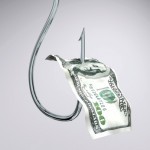
by | Apr 8, 2013
 Proving his concern about our country’s national debt wasn’t mere campaign lip service, Congressman Tom Latham continued to warn against the perils of a $17 trillion debt in Urbandale on Friday. He joined an event hosted by the Iowa chapter of Fix The Debt and toured the facility of Jon Troen’s ColorFX company.
Proving his concern about our country’s national debt wasn’t mere campaign lip service, Congressman Tom Latham continued to warn against the perils of a $17 trillion debt in Urbandale on Friday. He joined an event hosted by the Iowa chapter of Fix The Debt and toured the facility of Jon Troen’s ColorFX company.
Speaking to a group of ColorFX employees Latham seemed hopeful a long-term solution could be agreed to this year saying, “I think there is a real chance of getting a bi-partisan deal passed. It has to be done to ensure our nation’s economic and fiscal security.â€Â As the owner of a company trying to navigate through an increasingly shaky economy, ColorFX owner Jon Troen fully concurred by stating, “The national debt affects everyone and it has a direct impact on how small business owners like me run and manage their operations.â€
Mr. Latham’s participation in these types of forums should be heartening to all Iowans, regardless of their political persuasion, who realize continued record deficit spending is fatal to our entire population. I have reported here before that a close look at Rep. Latham’s voting record the last several years reveals a rock-solid fiscal conservative unwilling to mortgage the future for temporary political gains. With so many politicians these days willing to speak one way around election time and then consistently vote the other way when the spotlight fades, Iowa is lucky to have someone willing to both speak out and vote for their convictions.
Below are some pictures from the event:



by | Mar 11, 2013
 A very worthwhile group has come to Iowa recently and their mission is to solve the debt crisis that America is currently headed for. “Fix The Debt Iowa” is one of the 23 state chapters of a larger group which can be found at FixThe Debt.org.
A very worthwhile group has come to Iowa recently and their mission is to solve the debt crisis that America is currently headed for. “Fix The Debt Iowa” is one of the 23 state chapters of a larger group which can be found at FixThe Debt.org.
Last week they released a short web video in Iowa equating our nations fiscal problems with the budget of a middle-class family–which is cleverly done by adding or subtracting eight zeros.
I am happy to see efforts being made to frame the facts of this issue in a way that even the non-politically involved can understand. Since the national debt is now in excess of 16 million separate units of a million dollars, quantifying the problem is getting exceedingly difficult.
Below is the video, and if you are so inclined you can go to FixTheDebt.org to sign their petition.

by Steven Waechter | Jul 1, 2011
 Much attention has been focused on the size of the national debt as a whole; roughly $14.4 trillion. That number is astonishing, but the sheer size of the debt actually hides the true horror which is in store for the economy and future generations.
Much attention has been focused on the size of the national debt as a whole; roughly $14.4 trillion. That number is astonishing, but the sheer size of the debt actually hides the true horror which is in store for the economy and future generations.
The debt has many component categories, the largest of which is called Marketable Debt. That means the portion of the debt that was issued in treasury securities that can be sold in the secondary bond market, and it is around $9.2 trillion. The rest is Non-marketable, and held mainly by the Social Security Administration through bonds that cannot be sold.
The Marketable Debt also has its own sub-components, based on the type of security that was sold to incur the debt in the first place. Treasury Bills mature in 1 year or less and accrue interest; Treasury Notes mature in 2, 3, 5, 7 or 10 years, and Bonds mature in 30 years – and the Notes and Bonds pay coupon interest every six months. Each bond is sold at the prevailing interest rate at the time of the sale.
Here is the part that is frightening: Starting under President Clinton, expanding under Bush, and exploding under Obama, the federal government has shifted its borrowing from traditional 30-year Bonds to the shorter term securities.
According to the US Department of the Treasury’s Monthly Statement of Public Debt dated May 31, 2011, of the $9.2 trillion dollars of Marketable Debt, only about $965 billion are 30-year Bonds. More than $6 trillion are on Notes, with maturities ranging from 2 to 10 years, and a whopping $1.5 trillion are on 1-year Bills.
We are running record deficits, so we aren’t paying any of these off when they mature – we just roll them over onto new securities. We’re also adding another $1.6 trillion on to the pile.
Right now the Federal Reserve is fixing interest rates at levels so low that they cannot be maintained forever. When the Fed raised interest rates to more than 20% back in the 1979-82 recession, the Treasury actually sold some bonds at interest rates of 20% or higher. Imagine if interest rates went up to just 10% today, and stayed there for a couple of years. All of those Bills and Notes that mature and are rolled over will roll over to higher interest rates.
The interest payments alone will easily top $700 billion dollars a year, and since the debt is likely to grow further as interest rates go up, the country is likely to pay well over $1 trillion per year in coupon interest alone -which will be financed by the issuance of new Treasury Notes.
Imagine a world where the Army is disbanded, Medicare covers only critical care needs, the Social Security age is retroactively raised to 75, and the all retired government officials lose their pensions because the United States needs to dedicate so much of its budget to paying the interest on the debt. These are politically impossible measures.
The only other way to avoid direct default is to print money – destroying the nation’s economy with hyperinflation but technically making the interest payments, albeit with dollars devalued to near worthlessness. That’s how the Federal Reserve managed to keep interest rates so low up to this point – by buying Treasuries at artificially low interest rates with printed money. That is why Bill Gross of PIMCO dumped every piece of US Treasury paper his hedge fund owned – the returns on these bonds would have been eaten up by inflation.
There it is – either we ruin the dollar or we default. Default is by far the better option; we can restructure our debts to something more manageable. This will ruin our credit rating forever, so future politicians will not be able to run deficits for vote-buying projects and illegal “Kinetic Military Actions,†whatever those are. There are silver linings everywhere.

by Steven Waechter | Jun 13, 2011
 Imagine a plot of land in the desert, consisting only of mesquite scrub and dust. If you assembled a system of sprinklers on this desert land, and ran them heavily enough, you could make the desert green with grass, corn, or even water loving willow trees. But then the water supply you are stealing from runs dry, and the sprinklers sit there, idle. The greenery of your efforts wilts, dies and turns to dust.
Imagine a plot of land in the desert, consisting only of mesquite scrub and dust. If you assembled a system of sprinklers on this desert land, and ran them heavily enough, you could make the desert green with grass, corn, or even water loving willow trees. But then the water supply you are stealing from runs dry, and the sprinklers sit there, idle. The greenery of your efforts wilts, dies and turns to dust.
This is the story of government stimulus. First, the federal government stole – yes, I said stole – hundreds of billions of dollars to bail out first the banks, and then General Motors, and then spend hundreds of billions more on the President’s stimulus package, which promised to reignite the economy, fight of the recession, and reduce unemployment. The federal government crowded out private borrowers from the capital markets with their enormous deficits, damaging other sectors of the economy – but no matter. The stimulus program would create or “save†jobs elsewhere, making the whole thing worth while, somehow.
It didn’t work. It was never going to work. All we were left with was another economic bubble; this one not in stocks or in housing, but in government spending. Now, the cash supporting this situation – the air inflating the bubble – is being printed, at the cost of inflation and rising prices on everything; essentially theft through increased costs of living. Consumer spending is shifting to cover the increased costs of food and fuel, to the detriment of other goods and services.
As it became an obvious failure, the first impulse was to double down with another stimulus program – digging a deeper well. But not this time; the wealth of the country was depleted, the water was gone.
Now, we stand at the beginning of the double-dip recession – a recession within the depression that was born from the last recession. This time there is no way out and no way to delay. The economy as a whole can no longer afford to supply the cash to keep the government spending bubble inflated, a bubble that never should have existed in the first place.
It is time for the economy to be purged of all the mal-investments of both government and business and finally rebalance itself, something which it has not had a chance to do. Government stimulus was doomed from the beginning because it only stimulated a portion of the economy that depended entirely upon government money; the rest of the economy was damaged by this, not improved by it, and governments can, in fact, run out of money.
The next phase of the recession will be more painful than the first; with an economy that has been further weakened and a government lacking the resources to do much of anything, the next big dip is going to be one for the history books – which is terrifying.
![American Gladiators II: A Painful Look Back…A Bright Future Ahead]()
by | Jun 8, 2011
 The Following piece is the 2nd installment of an ongoing series here at The Conservative Reader. “American Gladiators†is a recurring feature focusing on the defining political issue of our generation: the crucial battle over Federal spending and the debt and deficit it creates.
The Following piece is the 2nd installment of an ongoing series here at The Conservative Reader. “American Gladiators†is a recurring feature focusing on the defining political issue of our generation: the crucial battle over Federal spending and the debt and deficit it creates.
A favorite saying of both political parties these days is that “elections have consequencesâ€â€”2010 proved that so do primaries. For Republicans no past event has had a bigger impact on the eventual major players and the shape of the fiscal debate’s battlefield than the primaries preceding the 2010 mid-term elections.
Though history now, you may recall at that time an internal debate was raging amongst Republicans. Many influential Conservative thinkers, including Charles Krauthammer, joined a large number of high ranking members of the Republican establishment in warning against selecting “unconventionalâ€, mostly Tea Party backed, candidates to compete against Democrats in liberal leaning districts.
Though admittedly unappealing, this camp made the case that in selected states it would be wiser to support more moderate Republicans who had a greater chance of winning in traditional Democratic strong holds. They particularly took issue with Christine O’ Donnell in Delaware, Linda McMahon in Connecticut, and Sharon Angle in Nevada, all of whom went on to win their primaries but lose in the general election.
While the stand was principled, harnessing a populist movement is difficult, and there is no guarantee a more main stream Republican would have won, it is fair to at least consider this rejection of political pragmatism as an over reach by the Tea Party… and one that had painful consequences.
Working without anesthesia, Dr. Hindsight unmercifully reopens the wounds when one considers how much better Republicans would be positioned with just four more Senate seats. Having a majority in this body to go along with the one already had in the House would have provided Republicans a massive strategic advantage. Specifically, it would have allowed them to not only pass unified bills on spending cuts and the budget, but to bypass the Senate buffer the President currently enjoys and send the bills directly to his desk. Removing this Senate buffer would have enabled Republicans to repeatedly, and at will, draw him out on targeted issues. Imagine a scenario in which every week he was forced to either agree and sign a bill, or veto it and go on record resisting specific cuts.
Any Democratic strategist would tell you that either of these actions would be vastly damaging to his re-election bid. Should he sign, his base would trample themselves in disgusted exodus, while a veto would leave him constantly defending unpopular expenditures, and require him to personally counter-offer with specific proposals (not his strong suit). Such extended exposure on vulnerable ground would have in essence reworded the old political axiom “sunlight is the best disinfectant†into “sunlight is the best infectantâ€.
In spite of these lost opportunities, snapping out of the past and returning to the present finds Republicans still in very good shape. Though it includes a few head scratchers, the polling data on long term budget issues strongly favors the GOP position. The best news is provided by the findings on the debate’s two most fundamental questions: Are budget deficits and the National debt widely perceived as problems? And, do people feel that success from Republican plans is fundamentally possible?
As to the first, a CBS News Poll (March 18-21,2011-m.o.e=+-3) found that 68% of respondents felt that the budget deficit was a “serious problemâ€, while another 26% termed it “somewhat seriousâ€. Only 5% thought it was “not too seriousâ€.
While beyond promising, perhaps the better news comes from a Bloomberg National Poll (March 4-7, 2011-m.o.e=+-3.1) which asked “Do you think it is, or is not possible to bring down the deficit substantially without raising taxes?†The results reveal a clear path to victory. 61% felt that it is possible, while only 37% thought it was not. This is critical because not raising taxes is both the exact approach taken by all the Republican plans, as well as one of the main criticisms leveled against them by opponents.
While it is true historically that the particulars of a proposal are less popular than its concept, starting with numbers this high leaves room for weathering the inevitable loss of points forthcoming now that specifics of the plans have been revealed. If the caustic attacks on the plans as being “extreme†are able to be zeroed out by the number of converted skeptics, there likely would still be ample room to compromise with Democrats on some points, which for passage in 2012 is an absolute must.
While looking back at what could have been is painful, the opportunity to win is still very much within reach. Given that the Tea Party is solely responsible for the fact that we are even having this debate, it is hard to criticize it. That being said, it is wise to note the times that the movement’s fierce purism creates a double-edged sword.
We will never know if different Republican primary candidates would have resulted in a Senate majority, but we do know that winning on an issue this big will require both strategy and some compromise. Going forward it will be fascinating to see to what extent the Tea Party tolerates each to be in play, if at all.
Sometimes the most nuanced political analysis is worthless and the whole issue comes down to a simple question. This appears to be just such an issue and the question that victory hinges on is: “Do the American people believe that remaining on the current path will end in a financial disaster?â€
For the reasons given above, if I was looking at this and was a gambling man—that faint sound you hear would be my chips…smoothly sliding across felt.




 Proving his concern about our country’s national debt wasn’t mere campaign lip service, Congressman Tom Latham continued to warn against the perils of a $17 trillion debt in Urbandale on Friday. He joined an event hosted by the Iowa chapter of Fix The Debt and toured the facility of Jon Troen’s ColorFX company.
Proving his concern about our country’s national debt wasn’t mere campaign lip service, Congressman Tom Latham continued to warn against the perils of a $17 trillion debt in Urbandale on Friday. He joined an event hosted by the Iowa chapter of Fix The Debt and toured the facility of Jon Troen’s ColorFX company.





